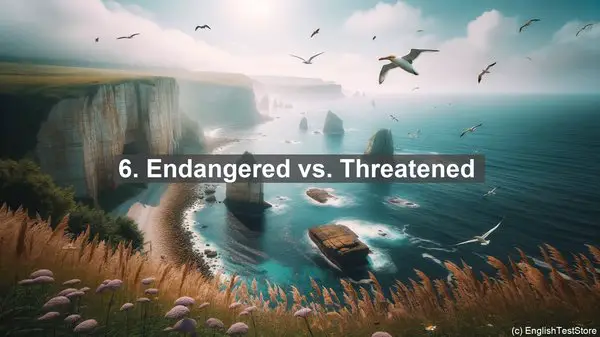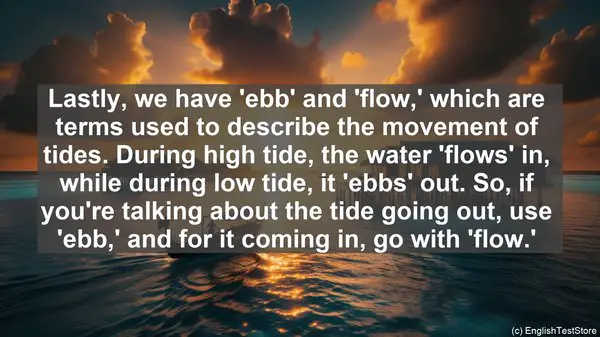Introduction
Marine biology is a fascinating field, but it can also be a bit confusing. Today, we’ll be discussing the top 10 words that often trip up students. By the end of this lesson, you’ll have a solid grasp on these terms, setting you up for success in your studies. Let’s dive in!
1. Benthic vs. Pelagic
The first pair of words that often cause confusion are ‘benthic’ and ‘pelagic.’ Benthic refers to the ocean floor or any organisms living there, while pelagic refers to the open ocean. So, if you’re talking about creatures that dwell on the ocean floor, use ‘benthic,’ but if you’re referring to those in the open water, go with ‘pelagic.’
2. Phytoplankton vs. Zooplankton
Next up, we have ‘phytoplankton’ and ‘zooplankton.’ Both are types of microscopic organisms, but they differ in their food source. Phytoplankton are like the ‘plants’ of the ocean, as they perform photosynthesis, while zooplankton are ‘animal-like’ and feed on other organisms. Remember, ‘phyto’ relates to plants, and ‘zoo’ to animals.
3. Estuary vs. Delta
Moving on, let’s clarify the difference between ‘estuary’ and ‘delta.’ An estuary is a partially enclosed body of water where freshwater and saltwater mix, often found where rivers meet the sea. On the other hand, a delta is a landform created by sediment deposition at a river’s mouth. So, estuaries are about water, while deltas are about land.
4. Ecosystem vs. Habitat
Now, let’s talk about ‘ecosystem’ and ‘habitat.’ While they’re related, they’re not the same. An ecosystem is a community of organisms interacting with each other and their environment, encompassing both living and non-living components. A habitat, on the other hand, refers to the specific place where an organism lives. So, an ecosystem is like a ‘big picture,’ while a habitat is more focused.
5. Invertebrate vs. Vertebrate
When it comes to ‘invertebrate’ and ‘vertebrate,’ the key difference lies in the presence or absence of a backbone. Invertebrates, like jellyfish or crabs, lack a backbone, while vertebrates, such as fish or dolphins, have one. So, if you’re talking about animals without a backbone, use ‘invertebrate,’ and for those with a backbone, go with ‘vertebrate.’
6. Endangered vs. Threatened
Now, let’s discuss the terms ‘endangered’ and ‘threatened’ in the context of species conservation. ‘Endangered’ refers to a species that’s at a high risk of extinction, while ‘threatened’ means it’s likely to become endangered in the future. Both terms indicate the need for conservation efforts, but ‘endangered’ is a more critical status.
7. Plankton vs. Nekton
Similar to our earlier point about plankton, ‘nekton’ is another category of organisms in the water. While plankton are mostly drifters, nekton are active swimmers. Think of fish or whales; they’re nektonic. So, if you’re referring to free-swimming organisms, use ‘nekton,’ and for those that drift, go with ‘plankton.’

8. Algae vs. Seaweed
Many people use the terms ‘algae’ and ‘seaweed’ interchangeably, but they’re not exactly the same. Algae are a diverse group of photosynthetic organisms, ranging from microscopic diatoms to larger kelp. Seaweed, on the other hand, specifically refers to larger, multicellular marine algae. So, all seaweeds are algae, but not all algae are seaweeds.

9. Coral vs. Coral Reef
Let’s clear up the confusion between ‘coral’ and ‘coral reef.’ Coral refers to the individual animal, typically a polyp, while a coral reef is a large, underwater structure formed by the accumulation of coral skeletons. So, coral reefs are made up of many coral organisms working together.
10. Ebb vs. Flow
Lastly, we have ‘ebb’ and ‘flow,’ which are terms used to describe the movement of tides. During high tide, the water ‘flows’ in, while during low tide, it ‘ebbs’ out. So, if you’re talking about the tide going out, use ‘ebb,’ and for it coming in, go with ‘flow.’
